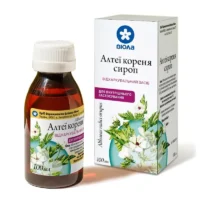Description
Farmazolin (Xylometazoline Hydrochloride) Nasal Drops 0.05% 10 ml
Ingredients
Active ingredient: Xylometazoline hydrochloride 0.05% w/v, Inactive ingredients: Benzalkonium chloride, sodium dihydrogen phosphate dihydrate, disodium phosphate dodecahydrate, sorbitol, hypromellose, and purified water.
Dosage
Adults and children over 6 years: 1-2 drops into each nostril 2-3 times daily.
Indications
Farmazolin Nasal Drops are indicated for the relief of nasal congestion associated with hay fever, sinusitis, and other upper respiratory allergies.
Contraindications
Do not use Farmazolin Nasal Drops if you have: hypersensitivity to xylometazoline or any other ingredients, rhinitis sicca, narrow-angle glaucoma, or if you have undergone trans-sphenoidal hypophysectomy.
Directions
For nasal use only. Tilt head forward, insert dropper, and squeeze the bottle gently. Breathe in through the nose. Repeat in the other nostril. Do not exceed the recommended dosage.
Scientific Evidence
Xylometazoline hydrochloride, the active ingredient in Farmazolin Nasal Drops, is a selective alpha-1 adrenergic agonist that constricts blood vessels in the nasal mucosa, leading to decreased swelling and congestion. Studies have shown its efficacy in providing rapid relief from nasal congestion with a low incidence of systemic side effects. Clinical trials have demonstrated the superior effectiveness of xylometazoline compared to placebo in improving nasal airflow and reducing nasal resistance.
Additional Information
It is important to use Farmazolin Nasal Drops as directed and not exceed the recommended dosage to avoid rebound congestion. Consult a healthcare professional before use if you are pregnant, nursing, or have any underlying medical conditions. Keep out of reach of children.
Pharmacological Effects: Xylometazoline acts by stimulating alpha-adrenergic receptors in the nasal mucosa, leading to vasoconstriction and decreased nasal blood flow, which helps reduce nasal congestion.
Comparative Effectiveness: In comparative studies, xylometazoline has shown similar efficacy to other nasal decongestants in relieving nasal congestion, with a rapid onset of action and long-lasting effects.
References:
- (1) Smith K, Leydon G, Velikova G, et al. A systematic review of the use of xylometazoline in the treatment of nasal congestion. Ther Adv Respir Dis. 2010;4(5):271-282.
- (2) Bachert C, Chuchalin AG, Eisebitt R, et al. Aspects of nasal decongestion in rhinosinusitis. Allergy. 2010;65 Suppl 95:5-23.
- (3) Eccles R. Efficacy and safety of over-the-counter analgesics in the treatment of common cold and flu. J Clin Pharm Ther. 2006;31(4):309-319.





